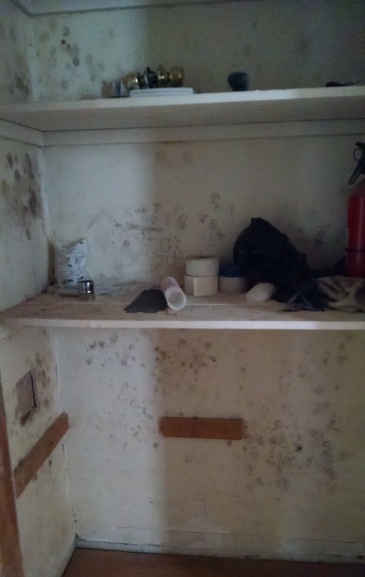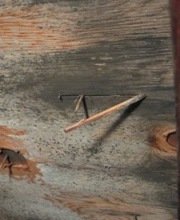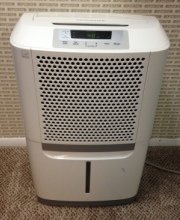Find a Mold Specialist Now
Click or Call, Toll-Free 24/7
Mold on drywall
Mold on drywall may result from a leaking or broken pipe, a leak in the roof, or other water damage to the wall. Flooding in the home can also lead to mold growth on drywall, of course. Unfortunately, it is extremely difficult to remove mold from drywall, so drywall that has mold on it should be removed and replaced. This can be a big job and we realize it's tempting to just try to wipe the mold off the surface of the wall. We'll explain why that's not a good idea and tell you how to safely and effectively deal with mold on drywall.
Why Can't Moldy Drywall Be Cleaned?
It is very difficult, usually impossible, to adequately remove mold from porous materials, and that includes drywall. Why? Well, porous materials aren't entirely solid, even if they appear solid to the naked eye. Materials like drywall have very tiny holes, or pores, in them, much like the pores in your skin. Microscopic mold spores can remain unseen in the pores of the drywall, even when the drywall appears free of mold. It's similar to the way dirt or oil can be trapped in the pores of your skin, even if you don't see it.
Much like how dirt or oil trapped unseen in the pores of your skin can lead to acne or other skin problems, unseen mold trapped in the pores of drywall can grow and spread and can also cause health problems. Since there is no effective way to remove mold from the pores of the drywall, the affected drywall must be removed and replaced.
Dealing with Mold on Drywall
As we just said, since mold cannot be completely removed from drywall, the drywall must be removed and replaced. This must be done with care because cutting into moldy drywall causes mold spores to become airborne and spread.
The U.S. Environmental Protection Agency (EPA) advises that if mold covers more than 10 square feet, a professional remediation company should be hired to remove the mold. If it is a smaller job that you plan to handle yourself and you have any health concerns, speak with your doctor to make sure it is safe for you.
 Mold on drywall in closet
Mold on drywall in closetFirst the work area must be prepared. Furniture and other items should be removed from the area if possible. Otherwise, they should be covered securely with sheets of heavy plastic to protect them from mold spores.
Plastic sheets should be taped over heating and air conditioning vents to prevent mold spores from entering your heating, ventilation and air conditioning system. Hi-hats hould also be covered with plastic.
If the room is small, a large sheet of heavy plastic can be taped over the doorway to keep mold spores from drifting out of the room and into other areas of the home. Simply closing the door is not enough, because mold spores can drift under the door or otherwise make it past the door. If the room is large but you're only working in a small area, mold remediation professionals recommend using two-by-four wood studs, large sheets of heavy plastic, and duct tape to cordon off the work area and keep mold spores from spreading throughout the entire room.
The floor should also be covered with large sheets of plastic, to prevent the flooring from becoming contaminated with mold.
First the drywall should be sprayed with water to prevent mold spores from becoming airborne as the drywall is taken down. The moldy pieces of drywall should be enclosed in heavy plastic trash bags before you carry them through the house, so as to prevent scattering mold spores as you go.
Of course, personal protective gear should be worn during the mold removal process, including disposable gloves, disposable hair and shoe covers, and an N-95 or N-99 face mask. The process of removing drywall that is contaminated with mold exposes you to mold spores that can make you sick if you fail to take the necessary safety precautions.
Looking for Mold in Walls
If you have mold on drywall, there is a possibility there can also be mold inside the walls, including in the insulation and on wooden studs within the walls. While you're removing and replacing drywall, make sure you look carefully for signs of mold inside the walls. Here is more about mold in walls.
If You Need Assistance with Drywall Mold
If you need assistance with mold removal, we suggest scheduling a free consultation with a mold removal professional. An experienced professional will visit your home, inspect for mold, advise you about the work that needs to be done, and provide a written estimate for the work. The professional will also answer any questions you have about the mold removal process, so you can get the benefit of some free expert advice whether or not you end up deciding to hire the professional with whom you consult. To find qualified mold removal professionals offering free consultations in your area, just follow the link.
Return From Mold On Drywall To Home Page
Ref:
Privacy Policy Terms and Conditions Accessibility Do Not Sell My Information Disclaimer Contact Us




